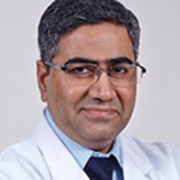What happens after you reach India for undergoing Acute lymphocytic leukemia treatment?
Evaluation
The treatment of acute lymphocytic leukemia begins with a consultation with a specialist. The doctor will assess all the signs, symptoms, and medical history of the patient.
Duration: 1 or 2 days
First Bone marrow biopsy and blood tests
The doctor suggests a bone marrow biopsy to determine the percentage of blasts in the bone marrow. The procedure is as follows:
- The doctor will numb the area around the hip bone by injecting local anesthesia.
- Then, a needle will be injected to collect a sample of bone marrow. Finally, the collected sample is processed in the laboratory, and a pathologist examines it for any possible abnormalities.
- Blood tests like CBC, Blood chemistry test, coagulation test, etc., will also be conducted.
Duration: 5 to 7 days
Induction chemotherapy
Induction marks the first stage of the treatment. It is an intensive procedure that targets immature blasts present in the body to bring them down to a normal range. It is followed by Preventive treatment of the spinal cord that includes injection of chemotherapy drugs into the CSF fluid. This step is necessary to prevent the spread of ALL in the central nervous system.
Type of procedure: In-patient
Duration: 2 weeks
Second Bone marrow Biopsy
Following induction chemotherapy, a second bone marrow biopsy is conducted. The results of this test help the doctor to choose between bone marrow transplant or Consolidatory chemotherapy.
- High-risk AML: No significant change in the overall blast percentage.
- Low-risk AML: Considerable drop in the percentage of blasts.
Duration: 5 to 7 days
Consolidatory chemotherapy
Conduction is the second stage or phase of ALL treatment. It kills the residual percentage of blasts in the bone marrow after remission. Consolidatory chemotherapy is given in cycles and includes a period of rest after each treatment. It also follows the Preventive treatment of the spinal cord.
Type of procedure: Out-patient
Duration: 3 to 4 months
A bone marrow transplant involves the transfer of cells from the donor to the recipient. It can be autologous or allogenic, depending on the source of bone marrow cells. The steps involved in the procedure are:
- The doctor numbs the area around the hip region and injects a syringe into the pelvic bone.
- The bone marrow is aspirated through the needle, and the sample is sent to the laboratory.
- The processed sample is infused back into the patient’s body after a round of chemotherapy.
Type of procedure: Can be in-patient or out-patient
Duration: 7 to 10 days
Maintenance chemotherapy
This therapy is only advised if the patient will not need a bone marrow transplant. It aims to increase the remission period to prevent recurrence or relapse of ALL in patients. It can be given in the form of oral tablets or administered intravenously.
Type of procedure: Out-patient
Duration: 1.5 to 2 years
Post-treatment care
The doctor may prescribe specific medication or therapies as a part of post-treatment care and recovery. Routine tests like CBC, Peripheral blood smear, etc., help to establish the next phase of the treatment, if necessary.













